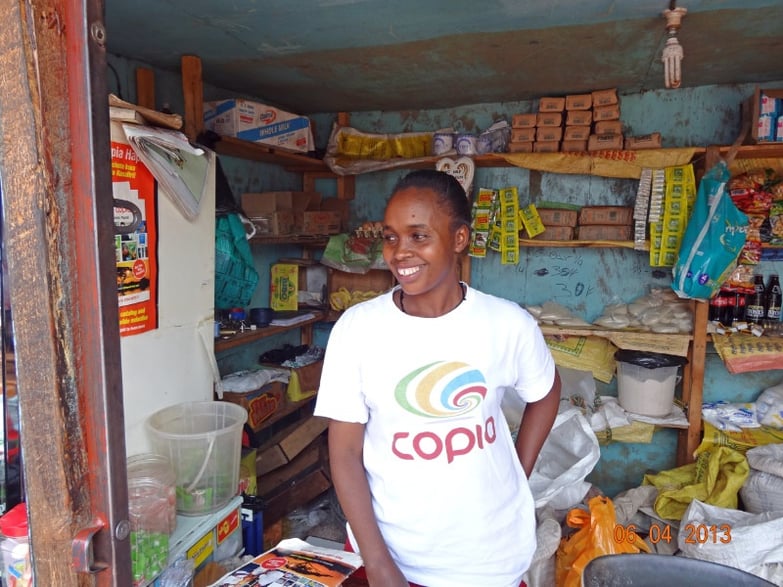Customer Case: E-commerce in Africa thanks to optimal and balanced routes
Posted by Louis D'hondt on Nov 14, 2017 4:43:00 PM
Can an African order online and receive the order within two days? It’s possible in Kenya, thanks to the efforts of Copia. With the help of OptiFlow, the company is bringing online buying to the average Kenyan.
In scarcely a few years’ time, e-commerce has come to feel very natural in Western Europe. Order today, delivered at home tomorrow, thanks to the excellent logistics of the e-tailers and their distribution partners. But can you also apply the model to regions with a less evident road network? And we are not thinking here of the less populated areas in Europe, but of African countries. Copia put the question to the test and went to Kenya to work on ‘e-commerce for the base of the pyramid’.
“It’s still too early to benchmark, but I expect a 20% saving on our kilometer costs over the manual solution.”
Willem Palthe, VP Supply Chain & Logistics at Copia

Greater purchasing power
This resulted in an online sales platform that Copia offers via an app to people at the bottom of this economic pyramid. Copia works through agents who make a tablet available to the local community. These are local entrepreneurs who run a shop or a business. Locals can make a purchase on the Copia platform via the tablet. The order via SMS text technology (3G or 4G is usually not available in the delivery areas) finds its way to Copia and will be delivered to the local agent within 48 hours. “We find that in a country like Kenya, the income of people at the bottom of the pyramid is rising,” says Willem Palthe, VP Supply Chain & Logistics at Copia. “Which generates economic growth. Thus a market is opening up for buying products via e-commerce. Small shops have to take risks to buy inventory while their customer base is small, which results in an expensive and limited range on offer. We deliver purchasing power, choice and time. Our platform removes the risk and uses online payments via a telephone connection, which is well developed in Africa.” Copia’s catalogue contains all the usual products related to eating and living: no fresh produce, but all other basic foods, household products, personal care products and even building materials and electronics.
No fixed routes, plenty of dirt roads and wrong maps
Copia developed a network of 2,000 Kenyan agents, of which a quarter place orders daily. This results in a relatively predictable delivery pattern. “True,” says Willem Palthe. “We are able to predict with 75% accuracy where we will deliver. That’s not unimportant because in our  experience, the relationship between the driver and the agent is very im portant. The drivers are our ambassadors and we try to give them a more or less fixed route. However, the 25% of unpredictable deliveries causes instability, for which we sought a solution.” And that was not the only challenge involved in making deliveries smooth in a country like Kenya. The quality of the road network is not comparable to that in Europe. The combination of dirt roads and rain doesn’t make things easy. “Compare it to traffic congestion in Belgium or the Netherlands,” laughs Palthe. “You have the traffic jams, we have the bad roads. It’s a problem you can deal with, but it leads to other economic principles. In Kenya, trucks are expensive and labour is cheap. That’s just the opposite of Europe.” Challenge number three is the maps that the drivers use. They are far from accurate and thanks to the many trips, Copia is able to help optimise these, as it were. “We indeed have this possibility,” says Willem Palthe. “A dirt road can suddenly appear to cross a cliff. We therefore must block the roads that do not really exist on the available maps.”
experience, the relationship between the driver and the agent is very im portant. The drivers are our ambassadors and we try to give them a more or less fixed route. However, the 25% of unpredictable deliveries causes instability, for which we sought a solution.” And that was not the only challenge involved in making deliveries smooth in a country like Kenya. The quality of the road network is not comparable to that in Europe. The combination of dirt roads and rain doesn’t make things easy. “Compare it to traffic congestion in Belgium or the Netherlands,” laughs Palthe. “You have the traffic jams, we have the bad roads. It’s a problem you can deal with, but it leads to other economic principles. In Kenya, trucks are expensive and labour is cheap. That’s just the opposite of Europe.” Challenge number three is the maps that the drivers use. They are far from accurate and thanks to the many trips, Copia is able to help optimise these, as it were. “We indeed have this possibility,” says Willem Palthe. “A dirt road can suddenly appear to cross a cliff. We therefore must block the roads that do not really exist on the available maps.”
Improving routes and balancing regions
With its wide mix of challenges, Copia contacted Conundra. Using OptiFlow, Conundra provided the necessary balance in the routes. Each driver has a daily fixed area, but with the ability to switch quickly. “Our regions are now well-optimised,” says Palthe, “but we are growing fast. We are noticing a daily increase in the order frequency of the agents and, moreover, new agents are added and others fall by the wayside. OptiFlow allows us to regularly revise the regions to get the right balance. This according to me is our great added value: we are able to optimise daily routes and rebalance our regions every two weeks.”
Up to 20% cost savings
Conundra addressed the Kenyan challenges by working more strongly in clusters. Instead of optimising the total route, the algorithm behind OptiFlow focuses more on clusters combined with weekly and monthly volumes. Using calculations based on averages and variance, in defining the clusters, each driver receives an achievable workload. “A clear vision was clearly present in the development phase, and you notice now that it is already working,” says Willem Palthe. “It’s still too early to benchmark, but I expect a 20% saving on our kilometre costs over the manual solution.” The professionalisation of Copia’s logistics solution also puts the company on track to further develop its ambitions in Africa. It aims over time to roll out the sales platform in other East African countries. “This is not yet concrete, but with Kenya we have shown that the system works. We are confident that we’ll be able to scale up our growth. The process of optimisation and balancing will be crucial to the success in other countries as well. However, we are very pleased that we have found a method that works and that is scalable.”


